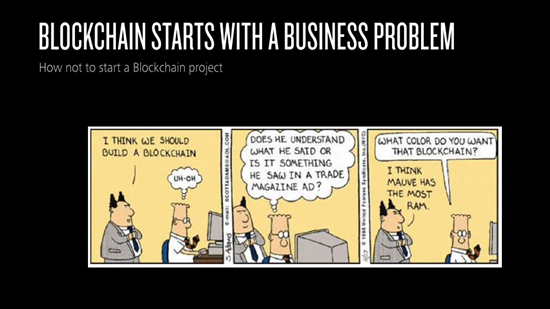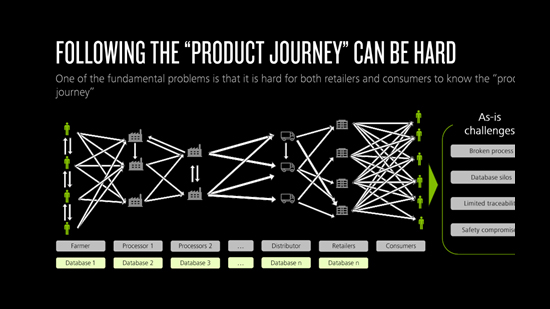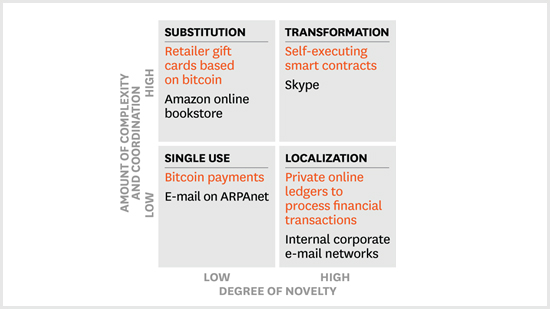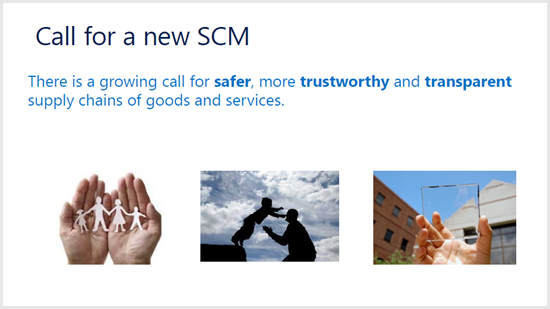As a distributed ledger that ensures both transparency and security, the blockchain is showing promise to fix the current problems of the supply chain. A simple application of the blockchain paradigm to the supply chain would be to register the transfer of goods on the ledger as transactions that would identify the parties involved, as well as the price, date, location, quality and state of the product and any other information that would be relevant to managing the supply chain. The public availability of the ledger would make it possible to trace back every product to the very origin of the raw material used. The decentralized structure of the ledger would make it impossible for any one party to hold ownership of the ledger and manipulate the data to their own advantage. And the cryptography-based and immutable nature of the transactions would make it nearly impossible to compromise the ledger. Some experts already believe that the blockchain is unhackable. Several efforts are already being made to leverage the power of the blockchain in improving the management of the supply chain. IBM has already rolled out a service that allows customers to test blockchains in a secure cloud and track high-value items through complex supply chains. The service is being used to push transparency into the opal supply chain and thus help fix a market fraught with forced labor and tied to the funding of violence across Africa. MobilityeCommerce provides solutions to build trust in the supply chain from the source to the consumer by deploying Blocklinks that enable companies to be more transparent on how they build their products. This includes disclosing everything about environmental impact, where the products were made and who they were made by. The blockchain has the potential to transform the supply chain and disrupt the way we produce, market, purchase and consume our goods. MobilityeCommerce’s efforts also promote socially acceptable practices, such as making sure that no exploitation of nature or man or animals has gone into the production of goods or services. MobilityeCommerce has AI based algorithms combined with blockchain’s transparency to eliminate counterfeit goods through early detection, especially the counterfeiting of drugs, which account for huge economic damage and the loss of hundreds of thousands of lives every year. MobilityeCommerce provides tamper proof labelling which aims to make the verification of a medicine’s authenticity as easy as scanning a QR code on the box. Each product will have its own identity on the blocklink to record changes of ownership, which can be easily accessed by everyone. Beyond transparency, there are other definite advantages that result from the crossover of blockchain technology and the supply chain. MobilityeCommerce is working on a block link solution that enables smart tendering across the supply chain. Pallets equipped with RFID tags publish their need to get from point A to point B on the ledger. Carrier mining applications will then place bids to win the move. The RFID will then award the job to the bidder with the most suitable conditions and the transaction will be registered on the blocklink. The shipment will be progressively tracked as the tag moves down the supply chain. The blockchain and smart contract infrastructure provides local producers with a decentralized platform in which they can share and exchange skills, resources and products without relying on third parties.
The blocklink has the potential to transform the supply chain and disrupt the way we produce, market, purchase and consume our goods. The added transparency, traceability and security to the supply chain can go a long way toward making our economies safer and much more reliable by promoting trust and honesty, and preventing the implementation of questionable practices.
very time a consumer chooses your product or service, they expect your company to deliver as promised. Yet, according to the 2017 Edelman Trust Barometer, we’ve entered an era of “trust in crisis.” Only 52% of people around the world trust companiesin any real way.
very time a consumer chooses your product or service, they expect your company to deliver as promised. Yet, according to the 2017 Edelman Trust Barometer, we’ve entered an era of “trust in crisis.” Only 52% of people around the world trust companiesin any real way.
Every customer should have a straightforward way to engage with real humans at your company to provide feedback and feature requests. (Who knows? This input may end up shaping your roadmap!) Treating customers as collaborative partners not only gives you awesome ideas from the people who know your users’ needs best, but it also keeps them around longer since they have a personal connection with your company and a stake in the future of your products. The only caveat to collaboration is making sure there is a process in place to close the feedback loop with candid answers.















